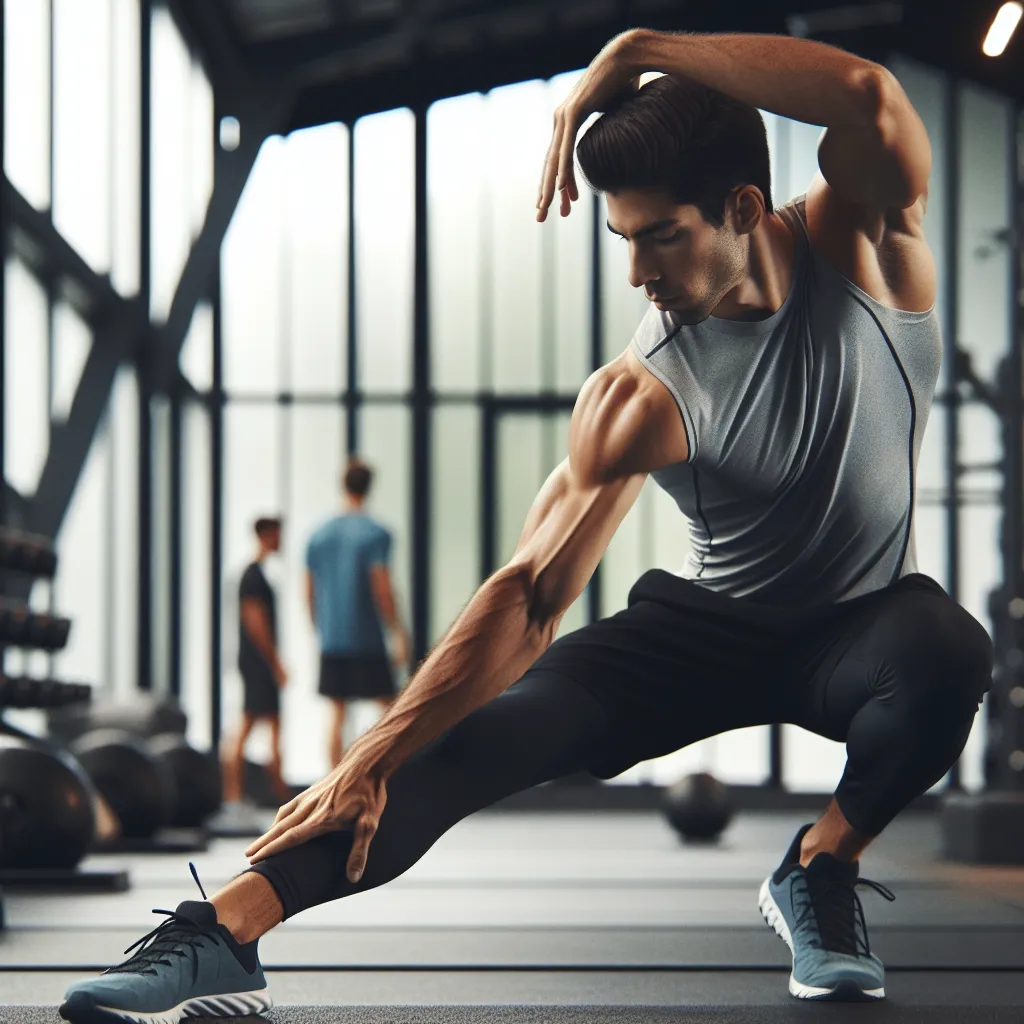The Importance of Flexibility in Athletes
Flexibility is a crucial component of athletic performance and injury prevention. Athletes who possess good flexibility are better equipped to achieve optimal performance and reduce the risk of injuries. The importance of flexibility in athletes cannot be overstated, as it directly impacts an athlete’s ability to move freely and efficiently, thereby enhancing their overall performance. Incorporating effective flexibility exercises into an athlete’s training regimen is essential for maintaining and improving flexibility.
Top Flexibility Exercises for Enhanced Athletic Performance
Flexibility plays a crucial role in enhancing athletic performance and preventing injuries. Incorporating effective flexibility exercises into your training routine can significantly improve your overall performance. Here are some top flexibility exercises that can help athletes to achieve enhanced flexibility and mobility.
1. Dynamic Stretching: Dynamic stretching involves performing a wide range of motion exercises that mimic the movements of the specific sport or activity. It helps to improve flexibility, increase blood flow to the muscles, and prepare the body for the upcoming physical activity. Dynamic stretching exercises can include leg swings, arm circles, and walking lunges.
2. PNF Stretching: Proprioceptive Neuromuscular Facilitation (PNF) stretching is a highly effective technique that involves both stretching and contracting of the targeted muscle group. By alternating between stretching and contracting, PNF stretching can help to improve flexibility and range of motion. This technique is often performed with a partner to achieve optimal results.
3. Foam Rolling: Foam rolling, also known as self-myofascial release, is a form of self-massage that helps in releasing muscle tightness and improving flexibility. By using a foam roller, athletes can target specific muscle groups to reduce muscle tension and improve flexibility. Foam rolling can be incorporated into a warm-up or cool-down routine for maximum benefits.
4. Yoga and Pilates: Both yoga and Pilates focus on improving flexibility, strength, and balance. These mind-body disciplines incorporate various poses and movements that can enhance overall flexibility and mobility. The practice of yoga and Pilates can also help in improving body awareness and reducing the risk of injuries during athletic activities.
5. Resistance Band Exercises: Utilizing resistance bands in flexibility training can provide a dynamic and effective way to improve flexibility. Resistance band exercises can target specific muscles and help in enhancing flexibility and mobility. Incorporating exercises such as leg lifts, hamstring stretches, and shoulder mobility exercises with resistance bands can contribute to improved athletic performance.
Incorporating these top flexibility exercises into your training regimen can contribute to enhanced athletic performance, reduced risk of injuries, and overall improved flexibility and mobility. By focusing on flexibility, athletes can optimize their physical capabilities and achieve their performance goals.
Injury Prevention through Effective Flexibility Training
Effective flexibility exercises are crucial for both improving performance and preventing injuries in athletes and physically active individuals. Incorporating a well-rounded flexibility training program can significantly reduce the risk of various musculoskeletal injuries, such as strains, sprains, and tears, while also enhancing overall athletic performance and functional movement patterns.
Flexibility exercises help to improve the range of motion around joints, which is integral for preventing injuries during physical activities. By increasing flexibility, the muscles and tendons become more adaptable to a wider range of motions, reducing the likelihood of overloading and becoming strained or injured during intense workouts or sports participation.
In addition to reducing the risk of injuries, effective flexibility training also plays a vital role in promoting better posture, balance, and coordination, all of which are essential for injury prevention. Improved posture and balance can help individuals maintain proper body alignment during movement, decreasing the chance of falls and resulting injuries.
Furthermore, incorporating dynamic stretching, static stretching, and proprioceptive neuromuscular facilitation (PNF) techniques into a flexibility training routine can contribute to enhanced muscle elasticity and improved functional movement patterns. These benefits are invaluable for individuals looking to minimize the risk of common sports-related injuries, such as muscle strains and ligament sprains.
By integrating regular flexibility exercises into a comprehensive training regimen, individuals can proactively safeguard themselves against potential injuries, ultimately supporting long-term athletic success and physical well-being.
Maximizing Performance with Flexibility Workouts
Flexibility workouts are an essential component of any comprehensive fitness routine, playing a crucial role in maximizing performance and preventing injuries. By incorporating effective flexibility exercises into your training regimen, you can significantly enhance your athletic performance and overall functional movement. When it comes to optimizing flexibility for improved performance, it’s important to focus on dynamic stretching, which involves actively moving a joint through its full range of motion. Dynamic stretching helps prepare the body for physical activity by increasing blood flow to the muscles and improving muscle elasticity, leading to enhanced power and agility during exercise.
In addition to dynamic stretching, static stretching is also beneficial for maximizing performance with flexibility workouts. This type of stretching involves holding a specific position to stretch a particular muscle group, helping to improve overall flexibility and joint range of motion. By incorporating both dynamic and static stretching exercises into your fitness routine, you can effectively prime your body for optimal performance while reducing the risk of muscle strains and injuries.
Moreover, a well-designed flexibility workout can contribute to better posture, improved body mechanics, and enhanced coordination, all of which are essential for maximizing athletic performance. By regularly incorporating flexibility exercises into your training regimen, you can develop a more efficient and fluid movement patterns, thereby enhancing your overall athletic capabilities.
Ultimately, integrating effective flexibility workouts into your training routine is paramount for maximizing athletic performance, promoting injury prevention, and supporting overall physical well-being. Whether you’re an elite athlete or a fitness enthusiast, prioritizing flexibility exercises can lead to significant improvements in performance and long-term musculoskeletal health.


